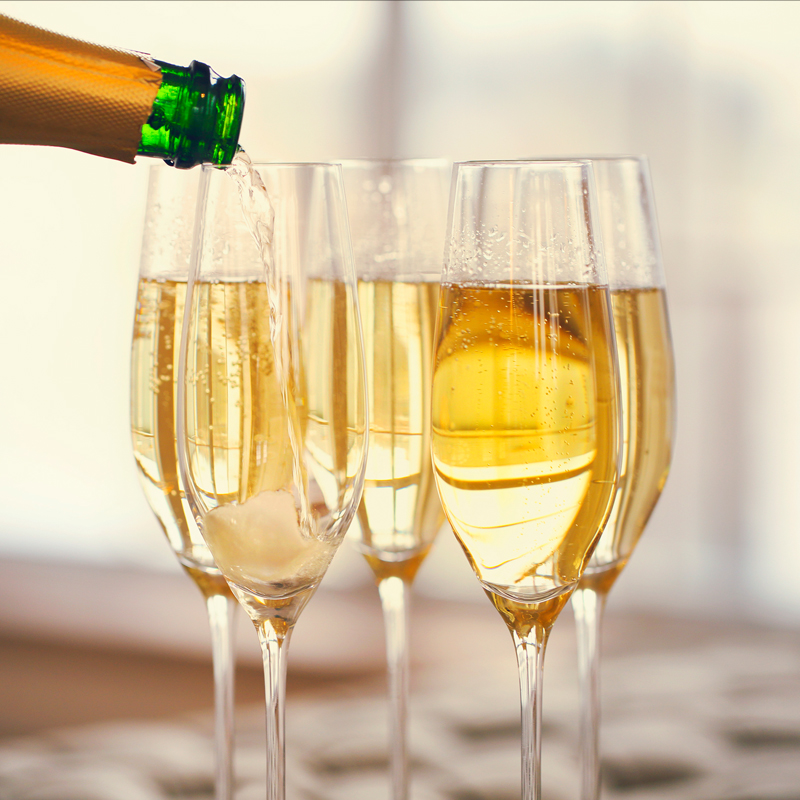
100 gr |
-- |
|
|---|---|---|
| Carbohydrate (gr) | 15.04 |
4928.47 |
| Protein (gr) | 3.59 |
1176.23 |
| Fat (gr) | 12.46 |
4083.43 |
| Fiber (gr) | 1.36 |
445.97 |
| Cholesterol (mg) | 14.64 |
4795.8 |
| Sodium (mg) | 325.27 |
106557.75 |
| Potassium (mg) | 392.16 |
128471.4 |
| Calcium (mg) | 78.15 |
25603.27 |
| Vitamin A (mg) | 46.04 |
15084.01 |
| Vitamin C (mg) | 6.16 |
2019.31 |
| Iron | 0.62 |
203.1 |
Champagne owes its name to the Champagne region in France. Grapes have been cultivated in this area since the 3rd century, and early on, the resulting wine was fermented in barrels. Over time, it was discovered that this wine underwent secondary fermentation, giving rise to a sparkling beverage that was once nicknamed "The Devil" for its unexpected effervescence. Today, champagne is celebrated as a symbol of elegance and festivity, often said to enhance beauty, particularly among women. It is a staple at celebratory events worldwide.
Calories in 100 ml of champagne are 76 calories
Health Benefits and Properties of Champagne
At first glance, it may seem unusual to attribute health benefits to alcoholic beverages, but champagne does offer some surprising advantages. Experts often compare its benefits to those of red wine, and scientific research supports some of these claims.
Rich in Antioxidants
Champagne contains a significant amount of antioxidants that neutralize free radicals, reducing their harmful effects on the human body. This property helps to minimize oxidative stress and slow the aging process.
Improves Cardiovascular Health
The beverage helps regulate blood pressure, typically lowering it. Additionally, champagne prevents certain heart diseases by cleansing blood vessels and improving circulation.
Boosts Digestive Health
Packed with plant-based polyphenols, champagne enhances metabolism and promotes efficient digestion. Food is absorbed quickly in the esophagus and distributed throughout the body via the bloodstream.
Enhances Skin and Hair Health
By dilating blood vessels and increasing blood flow, champagne nourishes the skin, hair, and internal organs. Improved circulation also promotes oxygenation of the brain and heart muscles.
Supports Respiratory and Digestive Systems
Regular, moderate consumption of champagne—about one glass occasionally—can improve respiratory function, enhance bile production, and support the digestive system.
Rejuvenates Skin
Champagne baths, a luxurious practice favored by the wealthy, are believed to rejuvenate skin cells, restore tissues, maintain water balance, and accelerate collagen production. These effects leave the skin looking youthful and radiant.
While a champagne bath may seem like an indulgent display of luxury, it offers surprising skin benefits. The antioxidants and natural acidity of champagne help exfoliate and rejuvenate the skin, maintaining its elasticity and youthfulness.